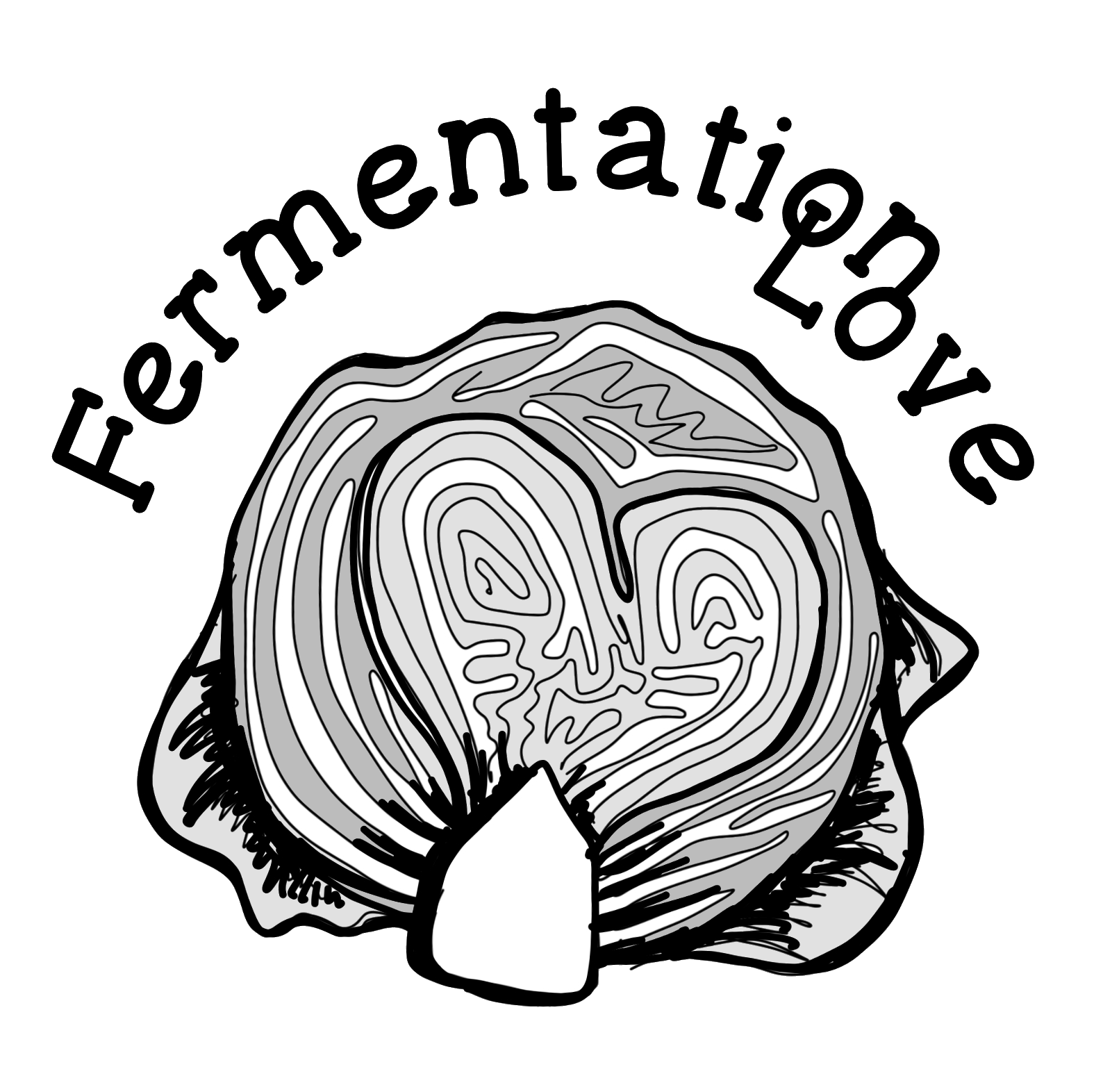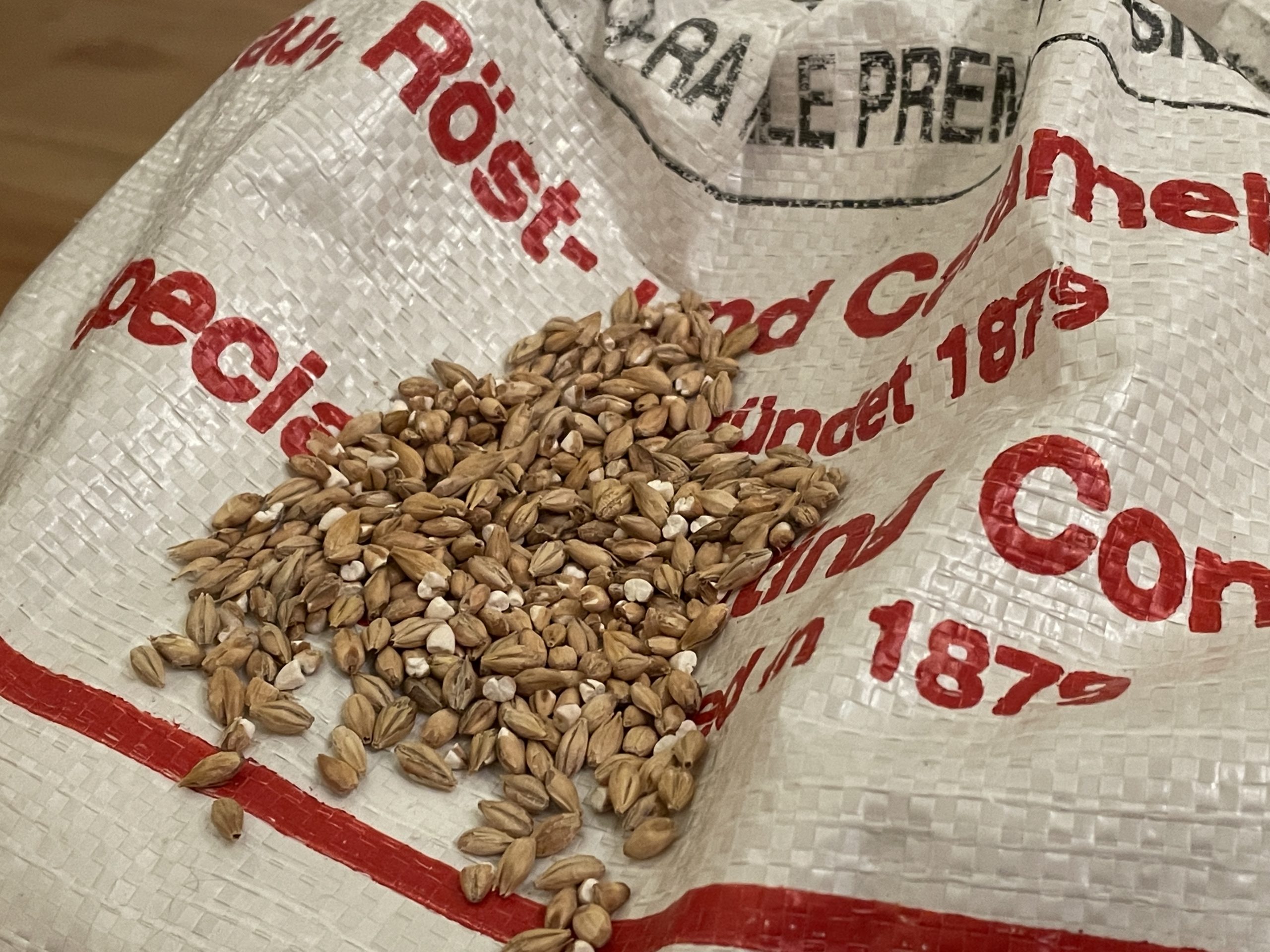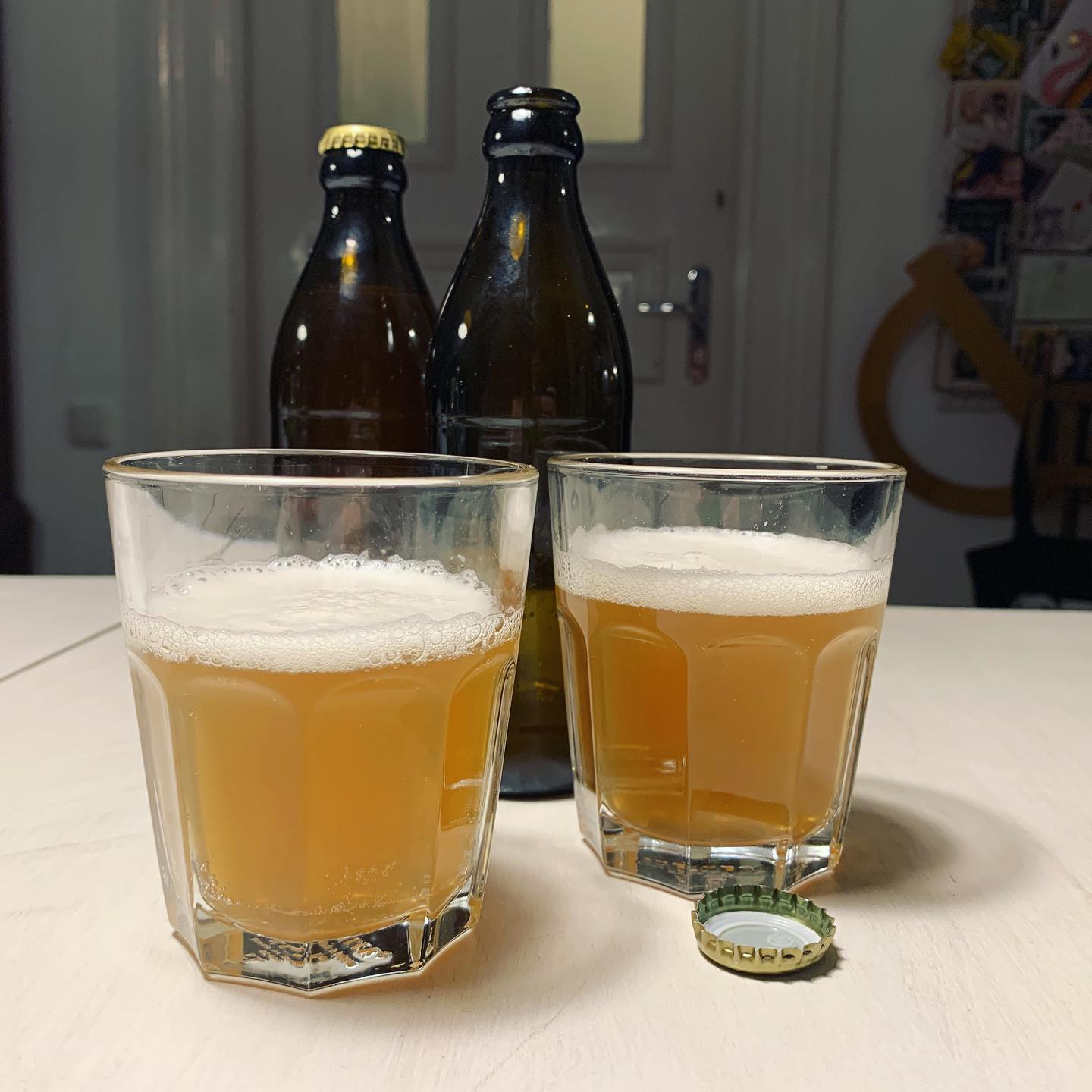Beer is great. What can I say, I fully live up to the stereotype of the beer-loving German. And since beer is also a fermented beverage, I obviously had to learn how to brew a decent craft beer myself.
Why should you brew your own craft beer?
Beer is one of the oldest beverages of mankind and brewing your very own beer has been a tradition for thousands of years. The first historically proven barley beer comes from Iran in the 5th millennium BC and was passed down in the written history of ancient Egypt and Mesopotamia. Brewing your own beer is also a great way to prepare for the end of the world. Because when the apocalypse comes, you should know how to make alcohol, for sure!
Before you can start brewing, you must register with the main customs office as a hobby brewer. Because, as you might expect, the production of beer in Germany is subject to tax. Fortunately, there is an exception for the private brewing of beer. You may brew up to 200 liters tax-free for your own consumption, as long as the brewing process takes place in your household or in another, non-commercial brewery. For other countries please check regulations individually.
In Germany you can register informally by email, the responsible customs office can be found in this list.
In addition, you will probably purchase equipment for brewing craft beer at home. What you need and what I recommend, I have brought together in an article. And although you only need water, hops, malt and yeast, it's good to know a little more about them before brewing. I have also summarized everything for you, and I'm glad if it's useful. You can find both links right here.
It is also good practice to make a brewing protocol for each brewing process. If customs should ever ask how much you brewed, you'll have the answer right away. Feel free to download my brewing log template, so you don't have to write down all the details yourself. I always make notes on the sampling of the finished beer on the back of the page.
Brew your own Craft Beer
I explain the background knowledge of brewing beer using the simple brewing process I use to brew top fermented beer myself at home. I also brewed my first beer myself using the recipe and it is still one of my absolute favorites. Brewing beer is a world of its own and offers infinitely more, and if it has grabbed you, you can inform yourself on countless sites and in manifold forums and exchange. Of course you can also contact the Fermentation Love Community, at the bottom of this page you will find the communication form. Or you can join us directly in the Facebook group.
And now let's go, learn to brew beer!
Recipe for Pale Ale
Pale Ale «Schmidts 0815»
Get all your ingredients ready, and if you are milling your own malt, that's the first step on brew day. Otherwise, the beer brewing begins with...
Mashing
Mashing is the mixing and gradual heating of milled malt and water. The insoluble starch from the malt is converted into soluble and fermentable sugars due to the action of the enzymes called α- and β-amylase activated during malting. Each enzyme needs a certain temperature range in order to develop its chemical conversion effect, which is why pauses, so-called rests, are inserted at the respective optimum temperatures.
Kettle mash
Kettle mashing is the simplest brewing method, also for craft beer. During mashing, you add milled malt and water (this water is called the mash water) to the brewing kettle and continue to heat both from resting stage to resting stage, ideally by one degree Celsius per minute. However, because I do a simple brew, I don't keep rests, but brew at only one temperature level. Nevertheless, it is important to know about the enzymatic reactions, so I will briefly list the usual rests for you. These are the protein rest at 47-53° C, the maltose rest at ~63° C and the saccharification rest at 72-73° C .
Protein rest
At ~50° C, protein is broken down by special enzymes called proteases to shorter peptides and amino acids. The beer becomes fuller-bodied, more shelf-stable, and clearer due to the reduction of turbidity proteins. Nowadays, most malts are already sold with well-dissolved proteins from the malting plant, so that protein rest is no longer necessary anyway.
Maltose rest
The maltose rest, which has an optimum temperature of 63° C, is responsible for a light, malty sweetness and the full-bodiedness of the beer. The β-amylases form fermentable sugar, maltose, from the starch of the grain. The longer this rest lasts, the more fermentable sugars are produced and the drier the beer becomes after fermentation.
Saccharification rest
During the saccharification rest, enzymes called α-amylases break down the remaining starch mainly into non-fermentable dextrins. The mashing process is all about breaking down all the starch in the malt, otherwise sugar would be missing during subsequent fermentation and the beer would not be able to ferment properly. The result would be a cloudy brew that tastes slimy or mealy.
English mashing for craft beer
When a mash has approximately the same temperature throughout the entire process, this is called English mashing. For this purpose, the mashed malt is first placed in the brewing kettle and 74°C warm water is poured on while stirring constantly. As the water mixes with the malt, the water temperature drops, usually to exactly 68° C, the desired temperature for the entire mashing process. The temperature of the mash must not rise above 80° C at any time, otherwise the starch can no longer be broken down.
With kettle mash, by the way, it is important to stir the mash constantly, otherwise it can burn. If your brewing kettle doesn't have an agitator, there are special mash paddles for this. A normal wooden spoon would probably be too small.
Iodine normality
Before the mash is heated and all saccharification processes are stopped as a result, the degree of saccharification is determined. The mash must be iodine-normal, which means that the existing insoluble starch from the malt has been converted into soluble sugar molecules at this point. To check this, brewer's iodine (iodine N/50 solution / 1% potassium iodite solution) is used for an iodine test.
Conduct iodine test
For the iodine test, place 1 tablespoon of the mash on a white plate or saucer and add 1-2 drops of iodine. If the sample turns blackish-blue, starch is still present, the iodine sample is considered positive and iodine normality has not been reached. Then the brew must be kept at 72° C for a little longer to allow the remaining starch to saccharify.
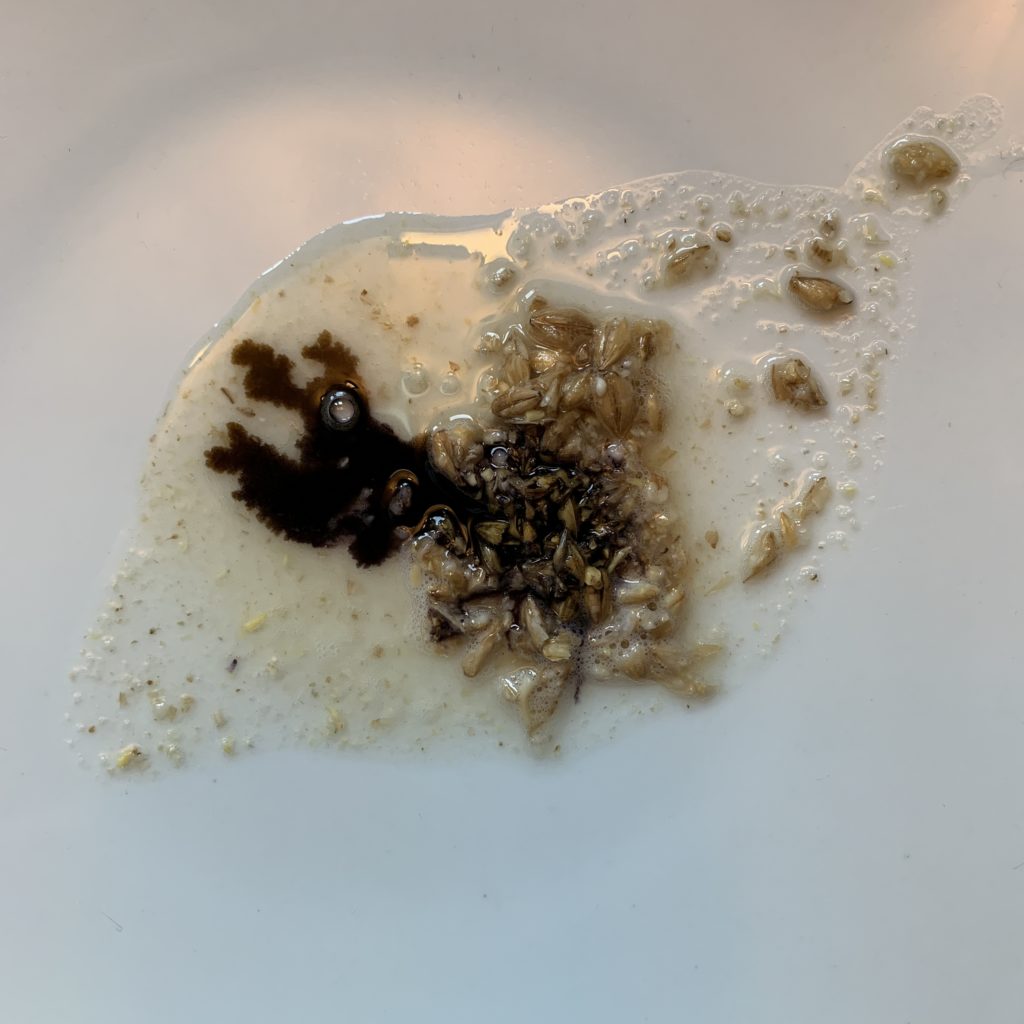
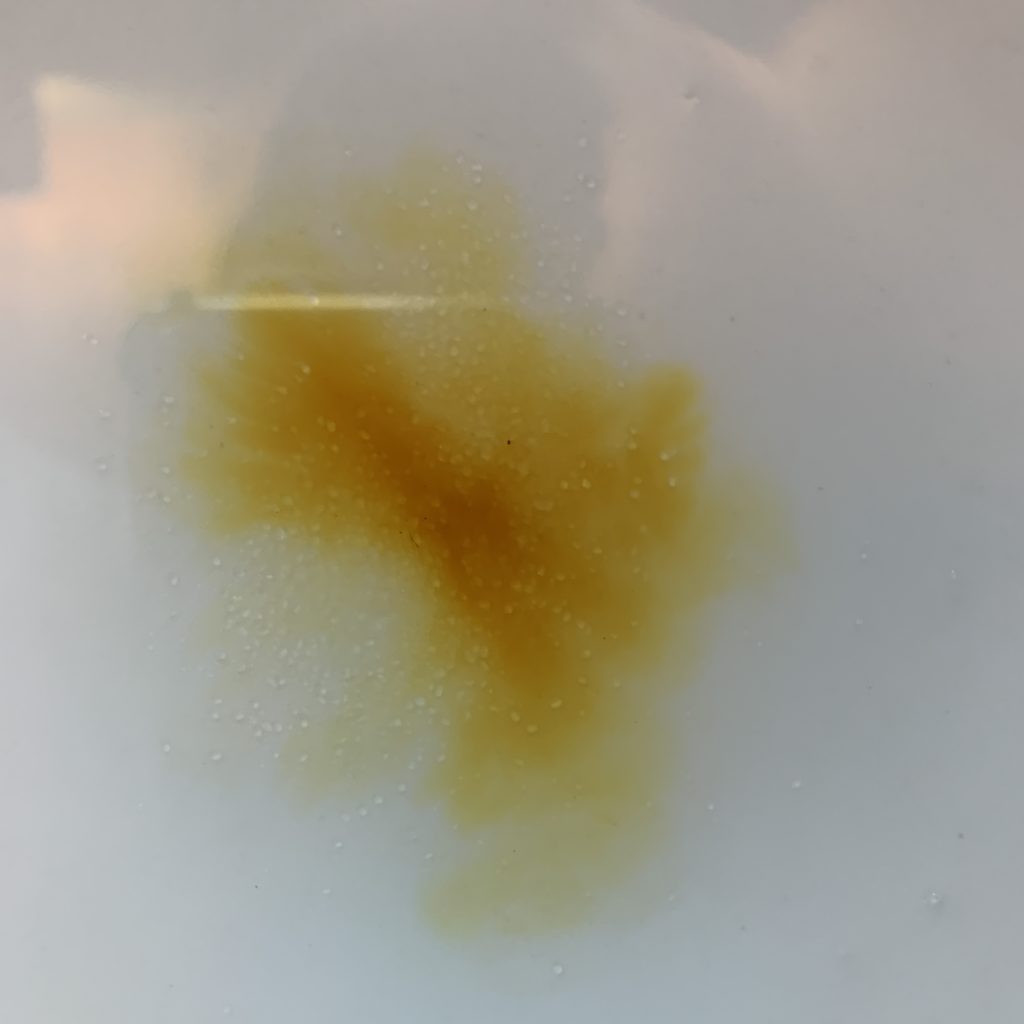
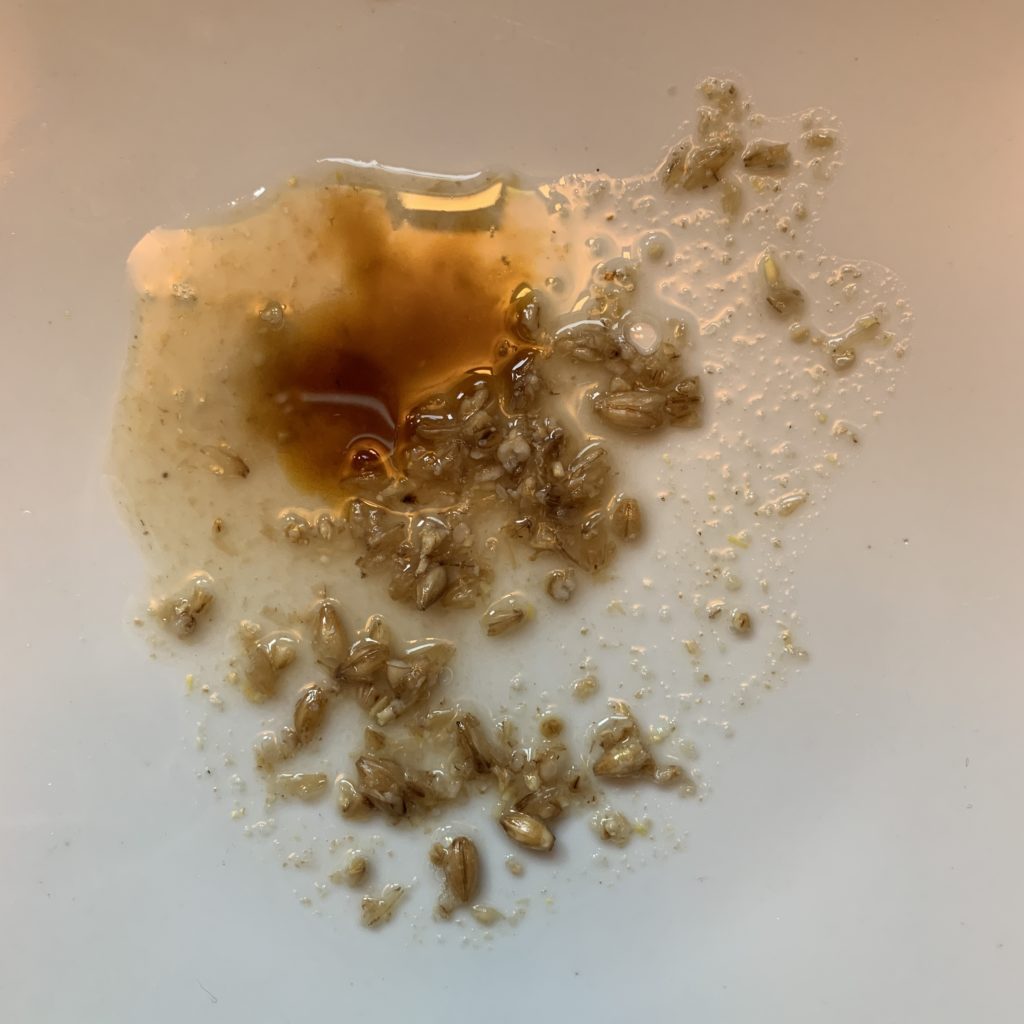
f.l.t.r. starch still present, complete saccharification, iodine normality reached
As soon as the sample remains yellowish-orange, iodine normality is reached and heating is started. Please dispose of the iodine sample and do not return it to the mash, iodine is not suitable for consumption.
Lautering

Mashing is followed by lautering, a filtering process that separates the husks from the wheat... er, the lees from the wort. The lees are the solid malt components that have been consumed in the course of the process, and the aromatic, golden brewing water is used to boil the wort after lautering.
The mash is transferred from the brewing kettle to the lauter tun. When brewing at home, the lauter tun and fermentation bucket are often the same one item. For lautering, a lauter tray is simply placed in the bucket, and during fermentation it is closed with a lid and fermentation pipe. Effective and economical!
After transferring, the lautering rest is observed so that the spent grains solids can settle and form a filter bed. After about 20-30 minutes, lautering is initiated. The brew is drained from the lauter tun through the tap with a silicone hose. At first, the pre-wort, as the first liquid produced during lautering is called, is still cloudy. Using a measuring cup or a large glass, it is collected 5-6 times and carefully returned to the lauter tun. To keep the spent grains from swirling up and loosening more malt residue and turbidity, place a swimmer on top of the liquid. I use the lid of a large plastic storage can for this. But you can also use the back of a ladle. As soon as the brew becomes clearer, you can let it run directly into the brewing kettle.
Before the spent grains run dry in the lauter tun, the sparge water is added, also via the swimmer. The sparge water is warm and is used to wash out the rest sugars that is still present in the spent grains. It is recommended to drain the wort slowly so that the spent grains do not compact and clog.
Determine original gravity
Now it's time to determine the original gravity of the beer in degrees Plato for the first time. The measurement is carried out with a beer spindle in a narrow, tall glass with the brew cooled down to 20° C. Especially beginners can not yet estimate how much liquid will evaporate during the subsequent wort boiling. This changes the original gravity, which will then have a higher value after boiling.
The higher the original gravity, the more alcohol the beer will develop. Up to 7° P one speaks of simple beer, 7 - 11° P distinguishes draught beer. I usually brew full beer at 11 - 16° P. Strong beer with 16° P and more would probably give me a headache, so I haven't tried it yet. By the way: Better to have too much Plato at the beginning than too little later. Diluting is still possible even after boiling the wort, you'll just need more bottles to fill.
Boil the wort
When the brewing kettle is full, heating begins to boil the wort. Boiling the wort removes unpleasant flavoring substances, such as dimethyl sulfide or hexanal, which would lead to undesirable aromas in the beer. It also coagulates residual proteins, which can be seen as white flakes on the wort. This phenomenon is called wort breakage. Last but not least, hops are added to the wort during boiling, and their aroma substances are dissolved by the boiling.
It is important that the wort boils effervescently so that the proteins can clump together well. In addition, the vapors must escape so that disturbing particles evaporate and do not fall back into the wort, which is why you boil the wort without a lid. I have heard that some hobby brewers boil the wort outdoors, because the steam development and the smell is disturbing. I can't confirm this, but I also live in an historic building, quite drafty with high ceilings...
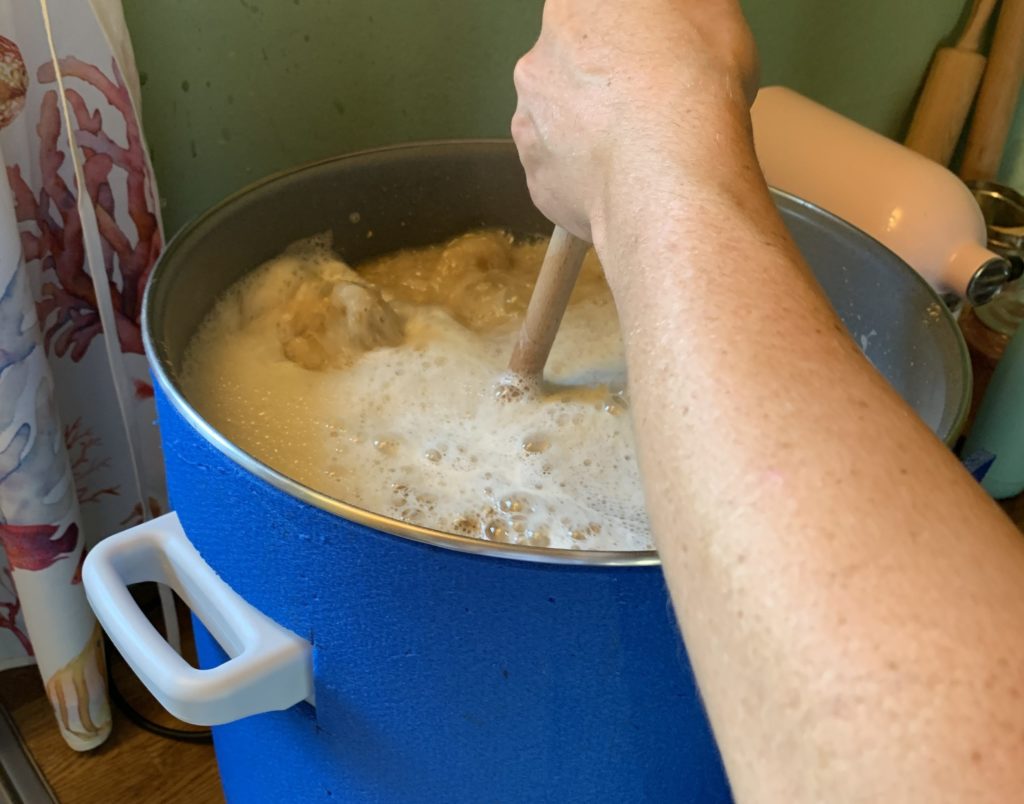

Hopping craft beer
I prefer to use hop pellets, which are easy to handle. Someday I will certainly brew a green-hopped beer, then I will add my experiences here. Hops are added to the wort in two batches. The first hopping is the bitter hopping, added as soon as the wort starts to boil. The long boil time allows the hops to release much of their bitter compounds. Its aromas, on the other hand, dissipate, which is why you can use a rather inexpensive hop for bitter hopping. Aroma hops, the second hop addition, is added toward the end of the boil. It gives the beer its bouquet and hop aroma, so particularly aromatic hop varieties are often used for this. Aroma hops and craft beer go hand in hand.
Immediately after aroma hopping, it is a good time to sterilize the fermentation bucket and other accessories (tap, fermentation pipe, silicone hose, hop filter) by boiling them out. Towards the end of the 90-minute boiling time, the wort no longer needs to be bubbling, so you can turn down the temperature and use the residual heat.
Whirlpool
When the boil is complete and the surface of the wort has settled, it's time for the whirlpool. The whirlpool is created by stirring a vortex in the brew kettle with the mash paddle or a long spoon. Its purpose is to bring together the protein break and the remnants of the hop pellets to form a cone in the center of the kettle, so that this so-called lees or trub does not clog the tap during lautering.
Hosing off
After the whirlpool, wait until the wort has settled down again and then start hosing off into the fermentation vessel. It is important to work cleanly here, so all the equipment must be sterile. You filter out the debris, wort breakage and hop residues, which have no place in the later beer. I bought a hop filter for this purpose because handling with a sieve and cheesecloth was too cumbersome for me.
Now the original wort is determined again. For this purpose, some wort is removed and cooled to 20°C. The exact temperature is important to be able to better calculate the alcohol content later. If the value is too high for you, you can simply dilute the wort with water.
Close the fermentation container and allow the brew to cool. The faster this happens, the better. In winter, you can simply leave the fermenter outside for a few hours. Overnight cooling is common, and the time frame is also still totally fine.
Yeast dispensing

When the brew has cooled down to 20 - 24° C, you can add the yeast; it will not survive at higher temperatures. The yeast is necessary so that alcohol is produced from the sugar. Please explicitly use yeast that is suitable for brewing beer and not simple baker’s yeast. Although both yeasts are fungi of the genus Saccharomyces, species Cerevisiae, they differ in subspecies. Bread baking with brewer's yeast is possible, but the reversal is not recommended.
The success of your beer also depends on the yeast used.
Since I use dry yeast, which stores well and gives excellent results, I have to give it time to rehydrate after sprinkling it in the fermentation vessel. After half an hour, it is ready to aerate it in order to start the fermentation process. To do this, I use a boiled, sterile soup ladle to ladle the brew, including the yeast, into the air several times and then stir it back in.
Fermentation
Then close the fermentation vessel tightly and provide it with a fermentation pipe from which the resulting carbon dioxide can escape. Don't worry, your beer won't go stale anyway, carbonation will follow later. The first fermentation provides the alcohol content. The ideal temperature for top-fermented beer is between 19° C - 22°C. The beer also tastes better later when it ferments in the dark.
After about 5 hours, the yeast already starts to work and you can observe the bubbling in the fermentation pipe. To prevent the beer from spoiling, please keep the fermentation vessel closed and monitor the fermentation of the young beer via the activity in the fermentation pipe and the determination of the residual extract. To do this, draw some green beer every 2-3 days using a beer spindle and read off the residual wort in degrees Plato. For the later alcohol content calculation, the green beer should be at 20° C during the measurements. As soon as the gravity no longer alters between two measurements, alcohol fermentation is complete.
Dry hopping
Dry hopping, also called hop plugging, is a hop addition that takes place only after the main fermentation. The alcohol produced in the meantime extracts the essential oils particularly well, and due to the lower temperatures than during wort boiling, not as many bitter substances are dissolved.
When it comes to trendy craft beer, dry hopping is probably the most crucial measure to add special flavor nuances to the beer. If you're brewing an Indian Pale Ale, you'll definitely want to dry-hop to bring out the citrus notes that are so prominent in IPAs. How much hops you add when dry hopping depends on the desired aroma and the amount of essential oils. As long as you're still gaining experience, it's best to stick to tried-and-true recipes.
I also use pellets for dry hopping, which I simply add to the green beer in the fermentation vessel at the end of fermentation. You can also use hop umbels in a bag. In both cases, hop residue settles to the bottom of the vessel, which is why you have to hose down and filter dry-hopped beer before bottling.

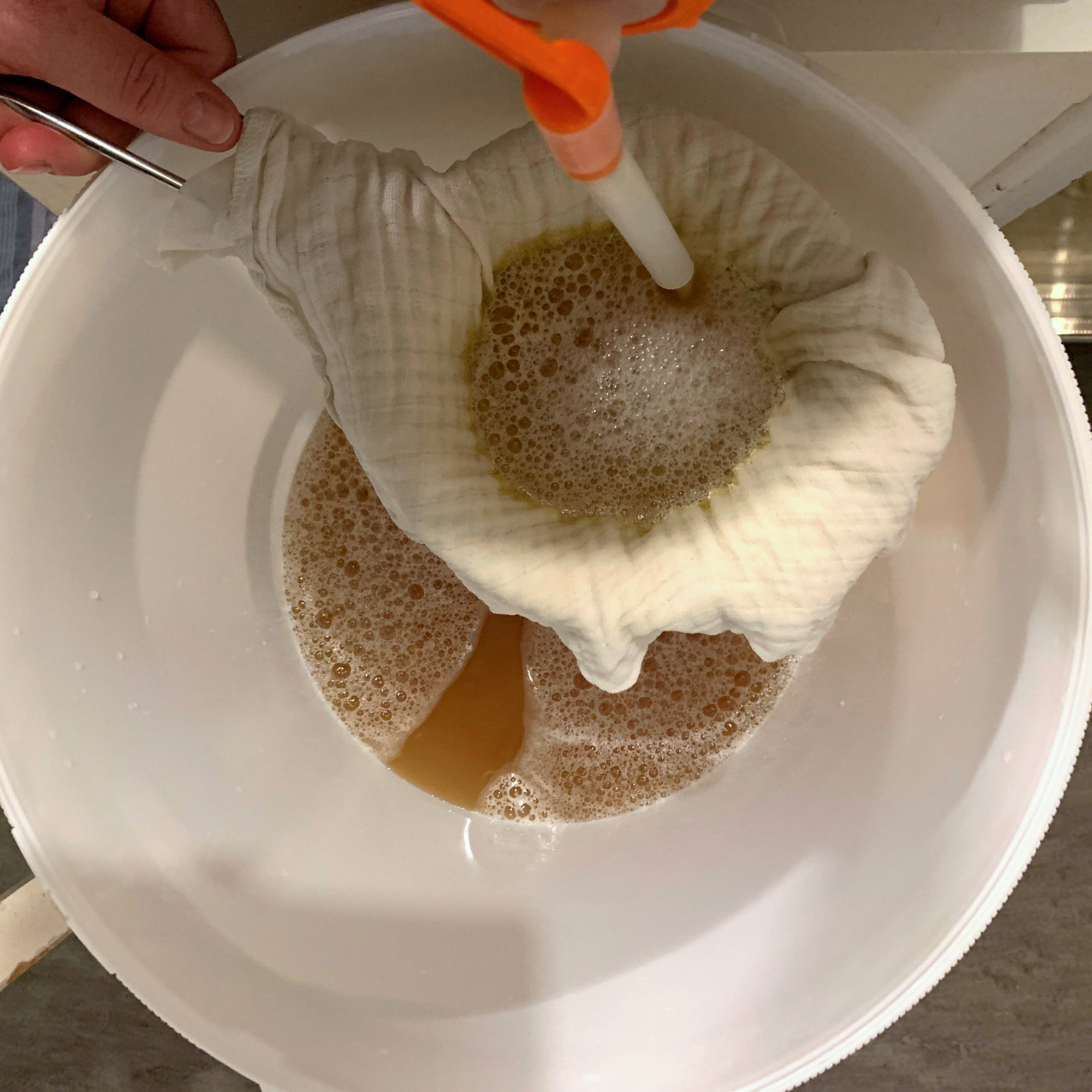

Second fermentation: bottling and carbonation of craft beer
The green beer is bottled as soon as it stops fermenting. The fact that you no longer observe any activity in the fermentation pipe is not a reliable indication that fermentation is over; only the determination of the residual gravity provides certainty. If you do not have a measuring device for determining the residual extract at home, you should not bottle the beer before 2-3 weeks have passed, when the yeast has converted the sugars into alcohol. To prevent beer bottles from exploding and causing damage, I strongly recommend investing in a beer spindle. Safety first with fermented beverages.
Because carbon dioxide has escaped through the fermentation pipe during fermentation in the fermentation vessel, the beer must be carbonated. For this purpose, sugar is added to the young beer, which the yeast in the bottles can transform into carbonic acid.
If you have dry-hopped your beer, you must transfer it before sugaring and bottling to filter out the hop residues. Transferring the beer also has the advantage that the yeast sediment remains.
Carbonization with sugar
When brewing beer at home, the easiest way to produce carbon dioxide is by adding sugar. In the case of purchased beer, this may not be allowed to be done at all, at least in Bavaria, due to the Purity Law. In Germany outside Bavaria, the use of technically pure raw sugar, beet sugar, invert sugar, starch sugar and even colorants made from sugar is permitted for carbonating top-fermented beers. Commercial brewers, however, mostly carbonate with an unfermented part of the wort.
Depending on the desired carbonation intensity, allow 6-8 grams of sugar per liter of beer. More sugar means more food for the yeast and thus more resulting carbonation. I do not add more than 6 grams and still have had very sparkling beers. I personally do not recommend more than 8 grams of sugar per liter. If too much carbonation occurs, pressure builds up and in the worst case the bottles can burst. In the best case, you just have a beer fountain in your face after opening.
The sugar is dissolved in warm water, added to the green beer and mixed well, then bottling can begin.
Bottling your craft beer
A bottling tube does a very good job here and is already available for little money. If you have opted for swing-top bottles, you only have to put on the swing-top cap. With bottles with crown corks you have a little more work, because each bottle must be corked individually. I prefer crown cork bottles and write down the respective color of the caps in the brewing log. Then I don't need labels or other methods to mark the type of beer.
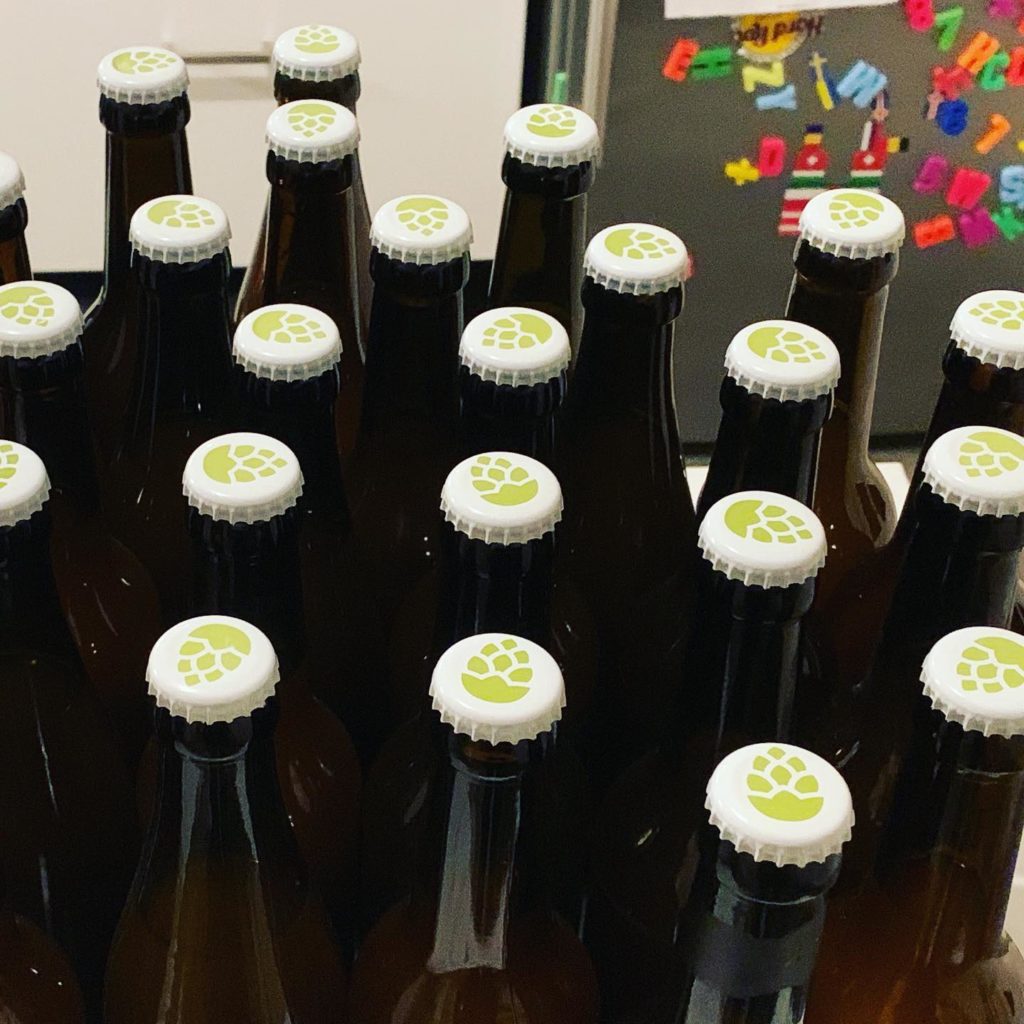
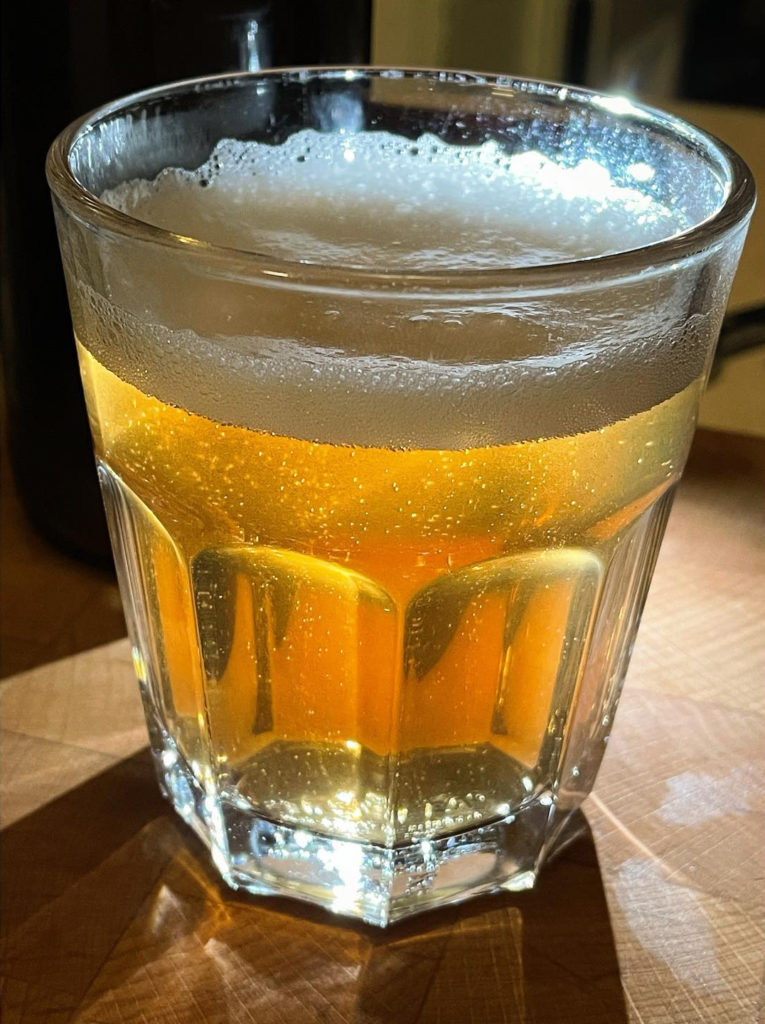

Beer ferments best in a cool place and in the dark, so use brown bottles if possible, which you also place in a box or corner in the cellar without light incidence. The taste changes with light, and not for the better. Try it with a bottle, you will taste the difference.
When the beer is ready for you and tastes best, you decide yourself. The first time you can try your beer is after three weeks.
Da deus fortunae!
